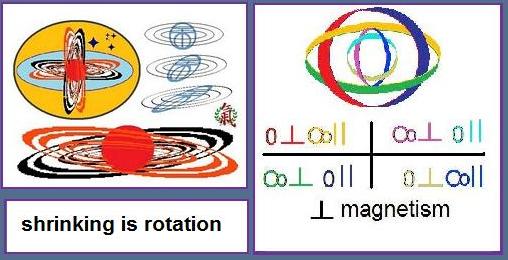
Close to the Virtual Logic
L. Edgar Otto 02-20-12
The phenomenon of cognitive dissonance has a deeper foundation than our current models of physics and perception. The human emphasis and greater ability than todays existing machines in pattern recognition also can learn from intuitions of systems and processes beyond those that seem apparent in our reality.
The fact that such complexity arises in human intuition shows that there is a wider system to encompass that beyond our immediate experience possible, if not only a higher virtual logic or shadow logic (shadow cat is more general than the quantum cat and its collapsing into grins and invisibility). Again, the frontier is how these two levels of logic and its deterministic or coincidental laws interface if it means anything that they do, and if they do.
Without much experience with some of the general programs on the higher level, the blog as a trend of communications that may become of itself a top level domain for a solid point of reference and not just a marketing presence on the internet. Thus arises for a greater number of people the style of the use of logical programs that makes it easy to press buttons rather than go deep into the systems encoding or even the various evolved methods of hypertext. Yet for the aware the knowing of such codes, really lines that grow with in the rapid grows of evolving computer time and storage capacity- if they cannot afford more advanced state of the art programs, the product is disappointing when its secrets are understood and not seem shallowly as just what anyone can put down in pixels, or for that matter once down the machine can replicate the process inexhaustibly.
Closer to the logic, to the visual aspects of what we see and a little more general than the lull of animation, the quasic system as a visual one primarily- the separation of the processes as documents and pictures, we can find other ways to do what amounts to programming by general context beyond the mere ability to add with bits or reverse the flow of the text postings- that and the fluidity of text with the formatting, a sort of movable type that assumes there is a difference, albeit relative, of scale and position on a plane. Other than this being too narrow a concept we encounter the problem of looping or how to arrange it to our benefit but there is no grasp of how this works on different context levels.
For some time I have worked on the pixel level and approached things as if there were uniform color space or some reasonable system of it from some cut off of values and fixing of values in a rather finite way. I was most surprised the extent to which the numbers of pixel regions in planes corresponds to number theory properties. Some of this earlier exploration I came across again in the archives I did not know Microsoft saved for a few years now on this computer, now off line to do work without invasions nor the push to update things in the various wars for the cloud and the loyalty of its uses to some brand.
I also came across the work of Hogg, a matrix I saved of one of the Fractal sequences in a 16 by 16 grid labeled in hexadecimal. I did not look at the commentary he made on it but I just saw he was surprised that his grid was able to change to different scales. Upon finding this again I realized I was had concluded the same numbers for squares I was using, a visual concept coming to the same numbers rather than from the bottom up of programming.
The illustration here from the folder that contains my work on such graphics design elements is composed of the twelve colors of crayola crayons (the USA standard for color) and the twelve inverses as if to form a gif like element of reading a single horizontal line as faster than different pixels on a line. The arrangement of reading is intimate to the scanning speed of a computer. Much in my approach is like this and in general a quasic matrix is much faster for most things.
For a start we can find the numbers of 5 and ten to make a region and precisely find it on a map, and with the conventions of programming we can place anything we want from a square view and not from just a products view that may not mesh or may take time in the typing- eventually we may find that programming as well as the reading of photos from this visual aspect is possible when it is confused with hypertext.
* * * * *


No comments:
Post a Comment